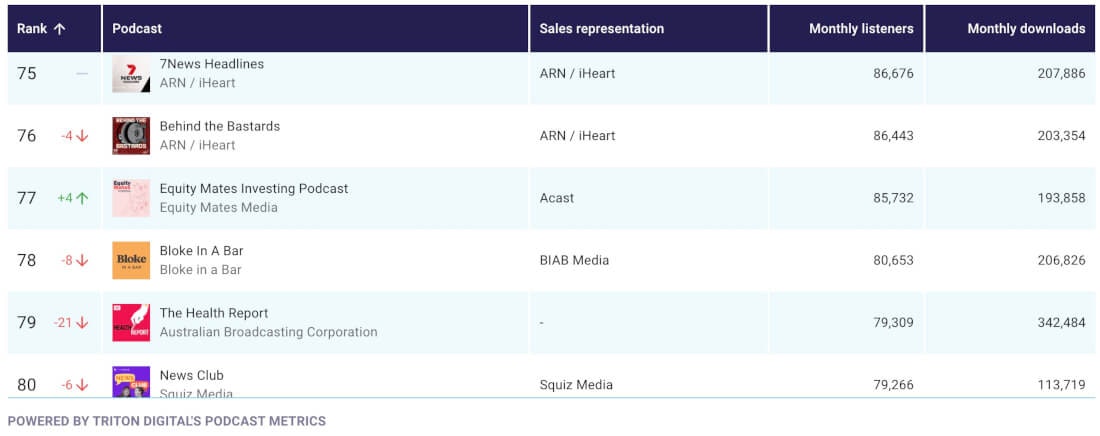
Podcast Advertising Metrics in 2024
Last updated 05.07.24
I attended London The Podcast Show 2024 and it was clear that advertisers, podcasters and people working within audio all had different, even contradictory, definitions for some of the most important metrics in podcasting.
This is certainly the case amongst different marketers, media agencies & journalists, which can be expected as it’s so niche, but for there to be confusion amongst ‘podcast people’ I think there needs to be something quick and easy to digest for people to refer to.
I have spoken to the major global podcast networks, hosting platforms, the IAB, independent podcasters and brands, and have summarised exactly where we are at during the time of writing this in May 2024.
Whether you’ve never advertised on podcasts before or you want to get a better feel for what you’re buying, this article will give you an honest, independent review and recommendations, so that you can make an informed decision for your next podcast media buy.
Listeners, downloads & impressions.
By far the two biggest platforms for podcast audio consumption are Spotify and Apple but they both report their platform ‘listen’ metrics using different methodologies. Whilst they provide useful insights on their audience demographics, they are not consistent reach metrics for advertisers.
Instead, the raw data of a podcast is passed from them onto the hosting platform (e.g. Megaphone or Omny) who calculate the data to form ‘downloads’ and ‘unique users’, measured by the certified IABv2.1 measurement guidelines (soon to be v2.2), and this is what podcasters and publishers typically use to report their audiences so it’s consistent across the globe.
When you are given costs/CPMs for an advertising campaign they are usually in relation to the number of impressions you’ll get on a specific podcast or range of podcasts, and it relates to the number of times your ad has been counted.
A download relates to the number of times a podcast episode has been ‘downloaded’, and a ‘listener’ is the number of individual people that have listened to an episode.
Using the below Triton Podcast Ranker as an example, let’s say you wanted to sponsor Equity Mates Investing Podcast for 1 month. Acast may come back to you with a plan that included Pre, Mid and Post roll slots.

So your ad would be played out 581,574 times across 193,858 downloaded episodes, by 85,732 people. Some of those people may hear the ad 21 times if they’re binging multiple episodes, some may hear it 3 times if they just listen to one episode. When the month is over you’ll get a report telling you exactly how many impressions have been delivered across a number of listeners.
Streaming, Downloads & Progressive Downloads
Other confusing definitions in podcasting are ‘streaming’ and ‘progressive downloads’.
If you are about to board a plane from Sydney to Dubai and know you are going to be offline for 14 hours then you might want to download your favourite podcast series to your phone, rather than watch Steven Bartlett on the in-flight entertainment.
This is known as a download (shock). When you do this you also download each of the ads built into that episode, and those impressions are counted in the report back to the client.
However, if you’re on your way to work through London, you may select a podcast en route that allows you to avoid making eye contact with anyone for just a little longer. Most people think of this as ‘streaming’, however it is actually a ‘progressive download’.
As soon as you play an episode, the podcast starts downloading, it’s just stored on a server somewhere rather than your phone. Once you reach around 10% play time for an episode the whole ep will have likely been downloaded, and all the ads built into that episode will also be reported, as with a regular download.
As far as I know, the only way to track exactly how much of an episode has been played, and whether your ads have definitely be heard, is through Spotify’s ‘Streaming Ad Insertion’ (SAI). They can track exactly where ads have been played and even how much of the ad has been listened to. However, this is only available on Spotify Original podcasts (Rest Is History, Joe Rogan, Serial Killers etc), and only if it's been listened to on the Spotify platform.
How do I know my podcast ads are being heard?
I’ve been asked this question a few times and the obvious answer is you don’t, but that is the same as going to the loo when a TV ad comes on or scrolling on your phone when a YouTube ad pops up on your Smart TV.
However, podcast ads are skippable, so what can be done to give yourself the best shot at being heard?
First and foremost, if you have a bad creative, you can be absolutely sure the impressions reported in your campaign won’t be accurate. People will skip through and your investment on the media buy will have been a complete waste of time. So make sure you take the time creating something the audience will give a chance.
In an ideal world, each download would mean the listener has listened to 100% of each episode, but as you can see from the definitions in the section above this isn’t the case. Fortunately listening intent and tracking capabilities are as consistent as they’ve ever been, especially after the latest Apple iOS 17 Update. There’s also certain tactics you can apply, in conjunction with due diligence and common sense, that will get you more value out of your media buy.
One tip is to push for pre-roll & mid-roll spots only. The average consumption for podcasts tend to drop off before the end of the episode, if not physically then definitely mentally, so if you can get the same CPM and number of impressions for pre & mid roll only then this is a no-brainer.
Another is to spend the time ensuring you know exactly which podcasts your ads are ending up on and push for a breakdown of impressions across each of them. This way you can judge from the length of episode, audience size & content if you think the ads are landing. You can also make a more informed decision on where to re-invest budgets in the future (for more detail on measurement capabilities in podcast advertising click here).
Hopefully this overview will help your understanding of podcast ad metrics and media buying, and if you are a ‘podcast person’ and have something to add or think I’ve missed something, please drop me a note and I’ll update.